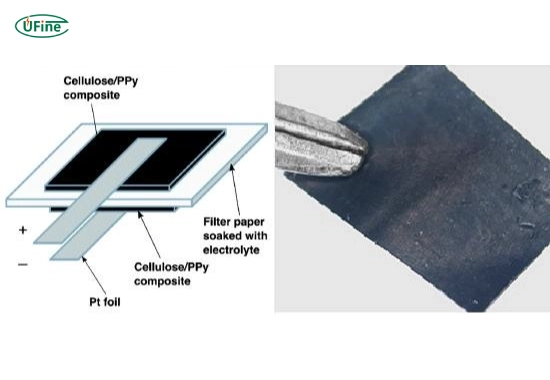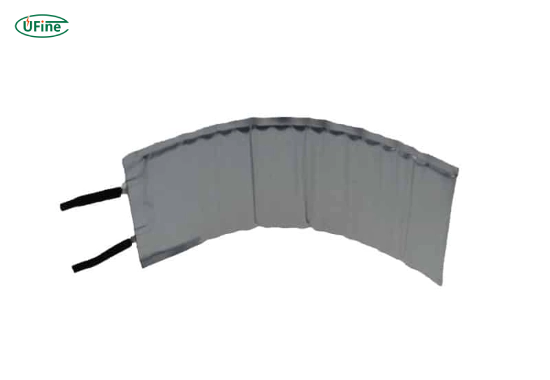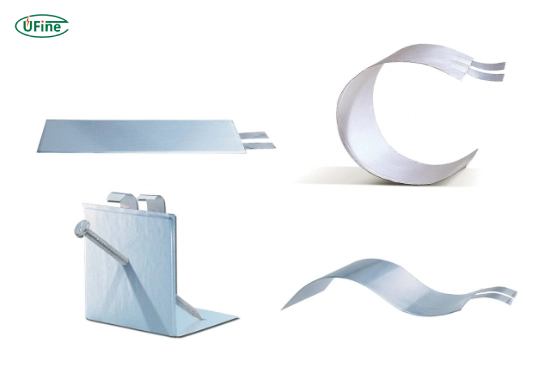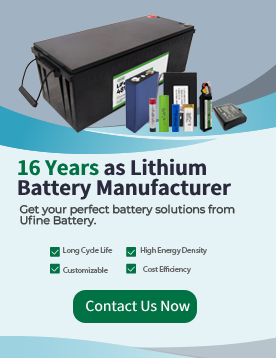What is the difference between a paper battery and a flexible battery? A paper battery is a thin, eco-friendly power source of cellulose and carbon-based materials. In contrast, a flexible battery is a bendable, durable battery designed for wearable and stretchable electronics.
With the rise of next-generation electronics, the debate of paper batteries vs flexible batteries is gaining attention. These two types of batteries are revolutionizing how we power wearable devices, implantable sensors, and even biodegradable electronics.
This in-depth guide will explore everything you need about these cutting-edge technologies. We’ll break down how they work, how they’re made, their pros and cons, and most importantly, which is better suited for your needs.
Part 1. What is a paper battery, and how does it work?
A paper battery is an ultra-thin energy storage device made from cellulose (paper) and nanocomposite materials like carbon nanotubes or graphene. It acts as a battery and a supercapacitor, offering quick energy release and long-term storage.
How does a paper battery work?
Paper batteries work by embedding electrodes into a paper substrate. These electrodes are usually carbon-based. The battery uses an electrolyte—a liquid, gel, or even ionic liquid—that facilitates the flow of ions.
When connected in a circuit, electrons flow from the negative electrode (anode) through the device to the positive electrode (cathode), generating current.
Real-world examples:
- A single sheet can power a low-energy sensor
- Stacks of sheets can increase voltage and capacity
- It can be activated with blood, sweat, or water
Part 2. What is a flexible battery, and how does it work?
A flexible battery is a bendable, stretchable power source designed for wearable electronics, flexible displays, and implantable devices. Unlike traditional rigid batteries, flexible batteries use thin-film technology or printed electronics to maintain performance even under mechanical stress.
How does a flexible battery work?
Flexible batteries use conductive polymers, thin metal foils, or solid-state electrolytes built onto flexible substrates. These components allow the battery to deform without breaking internal structures.
They can be designed in curved or stretchable shapes, making them ideal for use in:
- Smartwatches
- Medical patches
- Flexible displays
Part 3. What are the main differences between paper and flexible batteries?
What is the difference between a paper battery and a flexible battery in terms of materials, performance, and application?
Here’s a breakdown in plain language:
- Materials: Paper batteries use natural cellulose and carbon materials, while flexible batteries use synthetic polymers, metallic films, and solid electrolytes.
- Eco-friendliness: Paper batteries are biodegradable and non-toxic. Flexible batteries are less eco-friendly and require more complex recycling needs.
- Energy density: Flexible batteries provide higher energy density, making them better for power-demanding devices.
- Applications: Paper batteries are ideal for temporary medical implants or environmental sensors, while flexible batteries work better in smart wearables and consumer electronics.
- Durability: Flexible batteries are more robust under stress and can handle thousands of charging cycles.
Comparison Table: Paper Battery vs Flexible Battery
| Feature | Paper Battery | Flexible Battery |
|---|---|---|
| Main Material | Cellulose + Carbon Nanotubes | Polymers, Thin Metals, Solid Electrolytes |
| Thickness | ~0.1–1 mm | ~0.3–2 mm |
| Energy Density | 10–50 Wh/kg | 100–300 Wh/kg |
| Charge Cycles | ~100–300 cycles | ~1000–3000 cycles |
| Operating Temperature | 0°C to 60°C | -20°C to 80°C |
| Biodegradability | High | Low to Medium |
| Flexibility | Excellent (can be folded like paper) | Very Good (can bend, twist, stretch) |
| Manufacturing Cost | Low to moderate | Moderate to high |
| Current Use Cases | Disposable sensors, medical pads | Wearables, fitness trackers, smart textiles |
Part 4. How are paper batteries manufactured?
Paper battery manufacturing is centred on simple, low-cost techniques that use biodegradable components.
Key steps in paper battery production:
- Select a cellulose paper base: this acts as a structure and electrolyte container.
- Coat with carbon nanotubes or graphene: forms the conductive layer
- Add electrolyte: often a safe salt solution or gel
- Laminate or seal: keeps it thin and protected
Some designs even use biofluids (like sweat or saliva) as electrolytes. These batteries can be printed using inkjet or screen printing methods—making them cheap and scalable.
Part 5. How are flexible batteries manufactured?
Manufacturing a flexible battery is more complex. It requires advanced materials engineering and cleanroom facilities.
Flexible battery fabrication steps:
- Use of thin-film deposition: layers of metal and electrodes are deposited onto flexible substrates
- Solid-state or gel electrolytes: to maintain flexibility and safety
- Layer-by-layer assembly: cathode, separator, electrolyte, and anode are stacked and sealed
- Encapsulation: protective coatings are added to prevent moisture and physical damage
Technologies like roll-to-roll printing and laser patterning help improve scalability.
Part 6. Which battery lasts longer: paper or flexible?
Flexible batteries last longer because of their higher charge cycle capacity and better material durability. While paper batteries may last a few hundred cycles, flexible batteries can often exceed 2000 cycles.
Answer: Flexible batteries are more durable and last longer than paper batteries in most real-world uses.
Part 7. Which battery is more environmentally friendly?
Paper batteries are made from renewable, non-toxic materials and are fully biodegradable. Flexible batteries, while innovative, typically rely on synthetic materials that are not biodegradable.
Answer: Paper batteries are more eco-friendly and sustainable than flexible batteries.
Part 8. What are the main applications of paper and flexible batteries?
Paper battery applications:
- Disintegration-ready medical implants
- Innovative packaging with embedded sensors
- Environmental monitors in remote areas
- Disposable diagnostic tools
Flexible battery applications:
- Wearable tech (e.g. smart bands, clothing)
- Implantable medical devices
- Electronic skin and robotic prosthetics
- Foldable smartphones and displays
Part 9. What are the pros and cons of paper batteries?
Pros:
- Biodegradable and renewable
- Thin, light, and flexible
- Safe for the environment
- It can be activated using bodily fluids
Cons:
- Lower energy capacity
- Shorter lifespan
- Sensitive to humidity
- Not yet widely available
Part 10. What are the pros and cons of flexible batteries?
Pros:
- High energy density
- Can be bent, twisted, folded
- Long lifespan
- Already used in commercial wearables
Cons:
- Less eco-friendly
- Higher production cost
- Complex manufacturing
- It may require remarkable recycling
Part 11. FAQs about paper battery vs flexible battery
Can paper batteries replace lithium-ion batteries in the future?
Not entirely. While paper batteries are great for eco-friendly, low-power applications, they can’t yet match lithium-ion batteries’ energy density and stability.
Are flexible batteries already in use?
Yes. Flexible batteries are used in fitness trackers, smartwatches, and medical patches. They are actively being developed for broader use in flexible electronics.
Are paper batteries safe for the human body?
Absolutely. Paper batteries use non-toxic, biodegradable materials, making them ideal for medical implants or devices in contact with skin or organs.
Can paper batteries be recycled?
Unlike traditional batteries, biodegradable batteries don’t require special recycling processes, making them more sustainable for single-use applications.
Which battery should I choose: paper or flexible?
Use a paper battery to build a biodegradable sensor or medical implant. A flexible battery is the better option for wearables or devices that need more power and reusability.
Related Tags:
More Articles
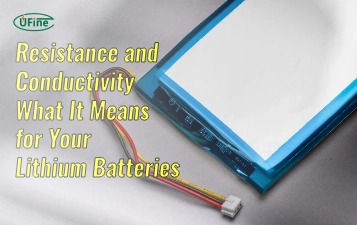
What to Know Before Buying a Tiny LiPo Battery for Your Project
Tiny LiPo batteries are powerful and compact. Learn how to choose the right one for your project with specs, safety, and charging tips.
Bloated LiPo Battery: Will It Explode?
Will a bloated LiPo battery explode? Discover the causes, risks, safety steps, and expert tips to avoid disaster and protect your gear. Must-read safety guide!
12V 100Ah Lithium Ion Battery Price: Full Guide
Learn about 12V 100Ah lithium-ion battery price, from cost ranges to best brands, hidden fees, and how to get the best deal. A must-read for smart buyers!
Resistance and Conductivity: What It Means for Your Lithium Batteries
Resistance and conductivity impact lithium battery performance, lifespan, and safety—learn how they work and why they matter.
What Is a Semi Solid State Battery and Why Should You Care?
Semi-solid-state batteries combine safety and high energy density, making them ideal for EVs, electronics, and future energy storage.
